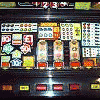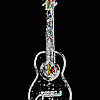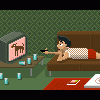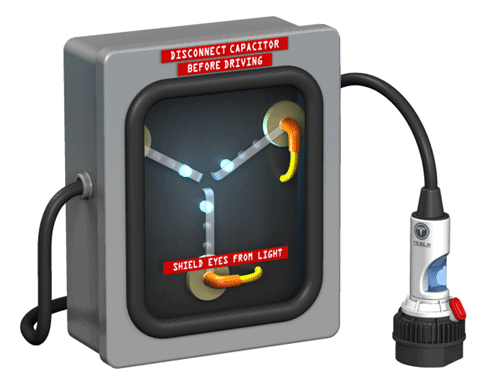Leaderboard
-
[[Template core/front/popular/memberRow is throwing an error. This theme may be out of date. Run the support tool in the AdminCP to restore the default theme.]]
[[Template core/front/popular/memberRow is throwing an error. This theme may be out of date. Run the support tool in the AdminCP to restore the default theme.]]
[[Template core/front/popular/memberRow is throwing an error. This theme may be out of date. Run the support tool in the AdminCP to restore the default theme.]]
[[Template core/front/popular/memberRow is throwing an error. This theme may be out of date. Run the support tool in the AdminCP to restore the default theme.]]
Popular Content
Showing content with the highest reputation on 04/25/20 in all areas
-
5 points
-
Hi All, Here we have a classic version of Project Coin's The Heat Is On. I do like these 'chase' style machines Project released in the early to mid 90's. Sound package on this machine is great and the game even though it uses the 20p/£8tkn rom, still plays very similar to the 20p/£6tkn version. Pleanty going on and the casino bank feature can repeat many times over. I used to own this machine many years ago and unfortunatly had to sell it on. At the time I got Dialtone to dump the 20p/£6tkn rom for me which I then uploaded to the long gone Poundrun forums. I've looked through my old hard drives but cannot find the original dump of the rom I uploaded. Been speaking to Hitthesix and said there might be a 20p/£6 cash rom out there possibly from Mr P. Hope you enjoy the layout😀 The Heat Is On-Project Coin.zip3 points
-
I am still working on it but maybe not in the ways you'd expect. In terms of emulation Impact is fully supported, MPU4 is ready for integration once Epoch is finished. Epoch has has the H8 core almost completely rewritten from the iteration that got released, increasing accuracy and speed. How the original actually ran at all I am surprised, it was so broken. There is a couple of issues left to resolve but I've not really been concentrating on the emulation as much as the visual aspects. There are various visual aspects I have been working on. The lamping now generates a brightness (calculated in lumens) and a colour (temperature colour in kelvin), both physically accurate making use of no less than 5 quadratic equation solutions to make the lamping look like the real thing. Stand it next to Casino Crazy and run it at 120fps and they look the same. Casino Crazy is special as it seems to have an error in the lamping which makes it much more flickery than other games, this is present on the real machine and emulation. I make use of the graphics card and feed the values in as pixel values in a 16 * 16 textures for calculation to take the load off the CPU, for the GPU a 16*16 texture or even 2 of them for later techs is nothing. I have also been working on integrating a ray-tracer, which was a much bigger idea than I thought it would be, I started this before nVidia's RTX was a thing, however it taught me the light physics required to get an accurate filament simulation. The idea is to create a scene in 3D with the machine in it, then render the 2D view (like a regular MFME game) using raytracing and cache the lighting values, this allows for an accurate 2D view to be played with light reflecting of the cabinet, walls, mirror glass, etc. Using several acceleration tecniques I have managed to get the render time for a 2560*1600 down to around a minute using an 8700k (6 core 12 threads) @5Ghz, which with full global illumination is not that bad, I am working on a GPU driven version as it has to be rendered for each lamp, so for an Epoch clubber with 512 lamps that takes quite a while. The files generated can be loaded and played in seconds but for editing that's still a bit long and 4k takes even longer. Looks gorgeous though. I also disovered a local company that does fine art scanning at 10,000DPI and can scan through glass in sizes up to A0. I am preparing to get the IMPACT machines scanned but its £150 setup fee plus £50 per scan at 1,000DPI (10,000 costs more), so I need to strip all the glasses first to avoid doing multiple trips with extra setup fees. I have point cloud data for the Vogue cabinet that I had 3D scanned too. When I get round to finishing it, it will be the most visually accurate emulator it can be. However I got a bit distracted. The priciples used in a raytracer can also be used for computational fluid dynamics, so I started putting together some basic demo's and went off on a bit of a tangent. Grab a model of an F1 car, stick it in the simulation and you can trace the airflow over the car and produce some fun images. And then, I've been looking at using the same priciples again to look at model data for Tornado's, there is real life data available but at the moment only some of them create a Tornado when placed in the current simulators when they obviously all should do because it happened in real life. This is usually done on a supercomputer so I'm a bit behind the curve, but there are so few people looking at the problem I'm hoping I might have a breakthrough, there are some things I learned doing CFD that cross over and I have a couple of approaches that haven't been tried yet. I could be entirely wrong and barking up the wrong tree, but if I'm right it may bring us 1 step closer to identifying which storms will/wont create a tornado. If you're wondering why, I just loved the movie Twister, its a crap film, but the subject matter is fascinating and I was surprised to learn that even in 2020 utilising super computers we still aren't able to give accurate warnings. And the false warnings breed complacency. So that's what I've been up to for fun. Professionally I am now an embedded Android developer, so pretty busy. But I still open up the emulator and do something when I get fed up of working with linux/java.2 points
-
Hi Guys Dicky Wink here ... Some of you may remember me from when the internet started 😊 hanging out on MSM forums and the Hovel and other FME places, I gradually moved on to other hobbies ( others would say they are obsessions ) over the last 5 years i have been running the Ditchburn Project ( www.ditchburn.co.uk ) which is a website dedicated to the first British Jukeboxes, im also in the process of restoring some Ditchburn Jukeboxes with the goal of hoping to open a small Museum dedicated to the Ditchburn Jukebox and its company … anyway I digress as usual … I have always been interested in Fruit machine technology even as a young child I built a working electromechanical Fruit machine, my mother will never let me forget the fact that I sawed up her Hoover vac pipe to make a pay-out tube 😊 when I was about 15 I went to my uncle Pauls company in Cardiff for a visit … the company was called Posterns and they made cabinets for all the big players Barcrest, Jpm, and Ace, as they also fitted a lot of the hardware like coin slots and buttons and pay-out mechs .. I usually came home with more parts to play with … In the 80s and 90s I started an electronics business and serviced boards for a local machine operator, mostly JPM lite a nudges and that era … I didn’t have a test rig so sometimes it was difficult to fault find but those machines were relatively simple … So that brings me to Today … here we are in Covid19 Lock-down and I have a couple of MPU4 boards to fix so just for the fun of it I have decided to build an MPU TEST RIG I have looked at the test rigs built by others here over the years and have always been amazed at how good they are and I especially love the You tube videos of these and the MPU4 repair videos as well .. so with lots of time on my hands I decided to follow the path of building my own … although as I tend to think outside the box I decided to do it a little differently rather than copy what others have done. So how is it going to be Different ? well over the last year I have been making some Jukebox parts using a 3D printer … so it was only logical to 3D print My own test rig 😊 Also one of the things I have noticed is that most people have to use a full set of reels or rely on the lamps to represent the reels … so my first challenge was to make a miniature set of reels that will be fitted to the test rig frame this would provide the best simulation and correct loading of the drivers, I also wanted to have the facility to use 5 reels if needed should I want to test a Club machine program I also wanted to use the correct 1.2W filament bulbs as in past Faulty MPU4s I have found transistors start to play up after being on for an hour or so under full load of the lamps and using LEDs wont provide the correct loading on the drivers … I also want to use the Test rig as a heater during winter 😊 I also wanted the test rig to be modular so I can remove and replace each section if required, its not that im likely to do this but I just wanted to do it that way… Lots of wants there 😊 but I have started so thought I would share my progress here in this thread also im happy to share the 3D printer files if anyone wants to give it a go … Im sure I will have lots of questions to you guys that have already done this so please be gentle with me … So first off here is the Test Rig reels Mech 3D Printing the 5 reels then Printing the Lamp holder for the 2 Lamp Matrix units the posts have small holes for a tinned copper wire to pass through and i will solder each lamp to the corresponding buss bar on the matrix ... this makes the holders easily removable if required, the holders just push into the holes ( does not use clips ) well thats the first stage on its way once i have made each module i will layout the test panel ... I will update this thread as i progress all the best ... Dicky Wink1 point
-
1 point
-
You want to get them laminated as well that way they'll last you for years. I've got MPU3 & 4 on both sides of an A3.1 point
-
1 point
-
All suspected Fruity roms are getting dumped, the others I’ll keep until I get a rom burner myself, thank you again to @Amot1 point







